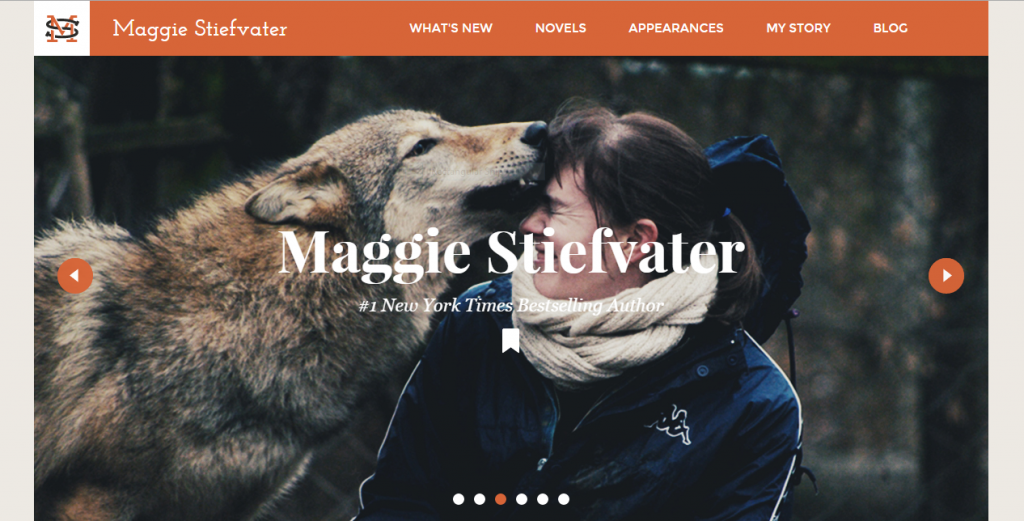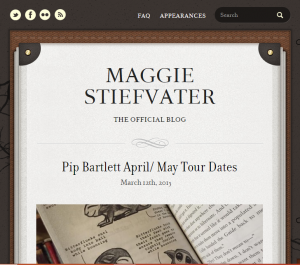Before we get into specificities about what pages you should have, what posts might work in certain places, and what stuff might not work at all, let’s talk about content as a whole.
For some odd reason, when it comes to content on an author website, it often gets separated. Below is an example from Maggie Stiefvater’s website.

The BLOG link takes you to this site:

Now, first, let me say, I adore Maggie Stiefvater and I think her site is really, really nice. Literally, she is the first author site that I clicked on that had this example. (Hey Maggie! Congrats on being number 2 in the Google Search for “Author Site”)
If an author does have a blog (and kudos to Maggie for having one!), for some odd reason, web designers, publishers, and other head honchos feel the need to separate blog content from the rest of the site. Even calling it ‘BLOG’ says that it’s different.
Why?
Content is content.
A book is content.
A page is content.
A post is content.
Why should we differentiate between them?
They all have a common goal: to be read. They all are created to cause a reaction with the reader. To get the reader to do something.
We can glorify writing a book all we want but, at the end of the day, we write a book to tell a story that readers enjoy and will want them to read other stories you have written.
We want readers to read our books and buy more books.
We want them to read our pages and buy our books.
Yet, when it gets to the subject of blog posts, our intentions (and the advice of the ‘author website design experts’) gets murky:
“Sample chapters.” (YOURWRITERPLATFORM.COM)
“Book Reviews.” (Author Media)
“Behind-the-scenes text.” (Kate McMillan: Outbox Online Design Studio)
“Diary.” (Fiction Notes)
Whether this is good advice or not (and we’ll explore this more in detail), it seems that this content is without intention. That the blog section of an author site is without a real focus.
So let’s get rid of the ‘blog’ idea completely.
And let’s just create content.
Our content will be on pages and posts. It will include text, images, and (maybe) videos.
There will be no ‘blog.’
